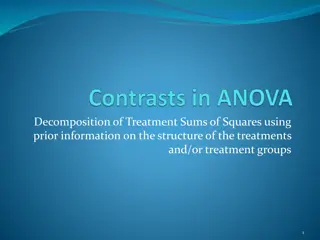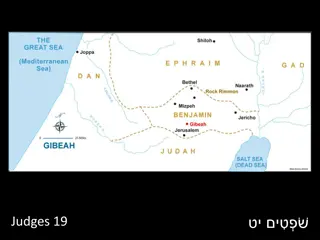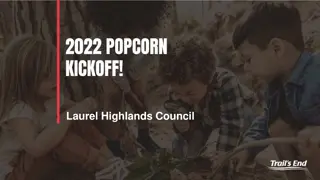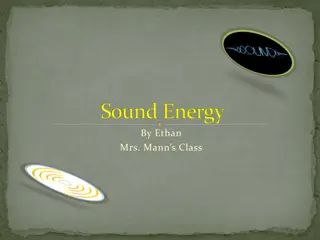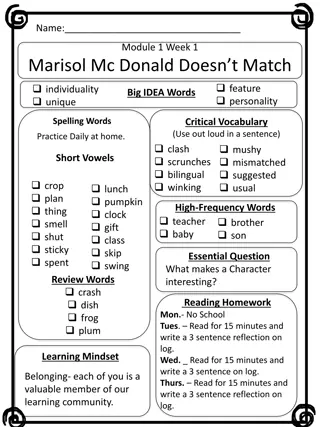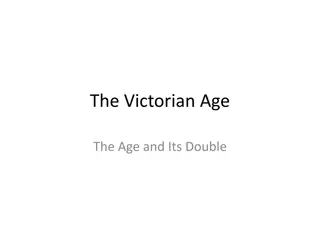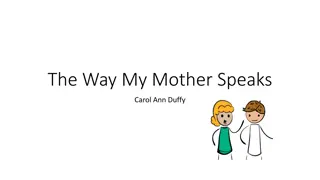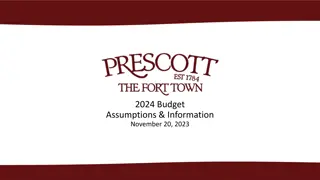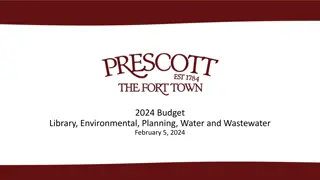Contrasts in "Journey's End" by Olivia Prescott and Ethan Moody
In "Journey's End," R.C. Sherriff effectively utilizes contrasts to depict various themes such as heroism, reality vs. expectations of war, courage vs. cowardice, and life at home vs. life at war through the characters of Stanhope, Raleigh, Osborne, Hibbert, and Trotter. These contrasts offer insights into the complex emotions and experiences of soldiers during wartime, highlighting the psychological impact of conflict on individuals.
Download Presentation

Please find below an Image/Link to download the presentation.
The content on the website is provided AS IS for your information and personal use only. It may not be sold, licensed, or shared on other websites without obtaining consent from the author. Download presentation by click this link. If you encounter any issues during the download, it is possible that the publisher has removed the file from their server.
E N D
Presentation Transcript
Contrast within Journeys End. By Olivia Prescott and Ethan Moody
A key dramatic effect used in Journeys End is contrast. R.C Sherriff uses this technique to guide the audience s response to characters and actions. For example, when the tall and slim Stanhope first appears on set, he is with chubby red-faced Trotter. This emphasises the heroic physical attributes of Stanhope and helps us to understand the boyish love Raleigh has for him.
Expectation vs. Reality of War In the play Journey s End, Sherriff contrasts the reality of war to the expectations through the characters of Raleigh and Osborne. When Raleigh enters the play in Act 1 scene 1 the reader is immediately alerted of his schoolboy naivety. He is presented as boyish, na ve, innocent and eager to please, yet also as resilient, physically tough and capable, he d just got his M.C. and been made captain. He looked splendid! It sort of made me feel this proves that Raleigh is a hero-worshiper and doesn t understand the concept of war. In contrast to Raleigh is Osborne, who understands the reality of war. He acts as a mentor to Stanhope, helping him to cope. He also mentors Raleigh, trying to bring reality to his boyish idea of the "hero" concerning Stanhope. When Osborne and Raleigh are about to go on a raid Osborne leaves his wedding ring and watch behind claiming "I don't want the risk of losing it" but it is clear he knows that there is a large chance he won't make it back to the company, however he returns to Stanhope stating "I do hate leaving a pipe when its got a nice glow on the top like that."
Courage vs. Cowardice The characters Stanhope and Hibbert are a significant contrast in characters in Journey s End. Hibbert is described by Stanhope as a little worm , this shows Hibbert lacks inner strength. He is contrasted to Stanhope and often breaks down in hysterics in Stanhope s presence. Hibbert is desperate to escape from the war, hoping for a medical reprieve because of his neuralgia . In comparison Stanhope depends on alcohol for courage, yet the audience is unable to judge as he has stuck it out and didn t take his last leave. Stanhope is described into the stage directions, as no more than a boy , he is also presented as a natural leader and in his three years at war he has never gone home. Stanhope is presented as a Stoic and tries hard to not let his fear show. He becomes extremely frustrated and threatens to shoot Hibbert who he perceives to be a coward . This scene allows Sherriff to show the darker side of Stanhope and also helps to create useful insights to the effects of the war on men.
Life at home vs. Life at war Sherriff employs parallelism between war life and home life, which helps the reader to understand the immense pressure soldiers were under to remain ok. His use of parallelism to nature shows how appreciative of nature the men were and how heavily they relied on nature to both pass the time and remind them that spring would come again despite the war. Trotter and Osborne frequently share conversations around the topic of gardening and this is a clear comparison between war life and life at home. Trotter mentions his red geraniums, white lobelia and blue calceolaria which exposes his patriotism but also his need to leave the front. In Act 1 Sherriff uses ironic parallelism when we learn that trotter is reading Alice in Wonderland. Trotter underlines the pointlessness of the book and quotes welcomes little fishes in with gently smiling jaws this is a clear reflection of the utter futility of the war itself.
Upper Class vs. Working Class When Sherriff was writing, the social order would have been very different to nowadays. By juxtaposing the public school educated upper class officers with working class soldiers like Trotter and Mason, Sherriff wanted to show how war brought everyone together. Stanhope tries to dismiss Trotter as having no proper feelings, but Trotter responds "Always the same, am I?, Little you know"; and his braveness later on in the play suggests that he is as much a 'hero' as any of the officers in the company. Also, Trotter drops off his h s which allows the audience to see a clear contrast between his dialect and officers such as; Osborne and Stanhope. Sherriff uses Dialect to represent the class system within war and this is a accurate reflection of social class at home.
Food vs. No food In Journey s End the characters all at some point in the play mention or discuss food. The biggest food user would be Trotter because he constantly refers to food throughout the play and uses it as a coping mechanism and also to ease the tension in the dugout when emotions are high. This is a contrast to reality as they have little or at times no food. The character of Mason is used as an equilibrium and after high moments of tension he enters the dugout with food or presents the men with a conversation surrounding food. Therefore, it could be argued that food is used as an equilibrium also. This shows contrast because Mason uses food as a distraction even though they have insufficient amounts of food.






